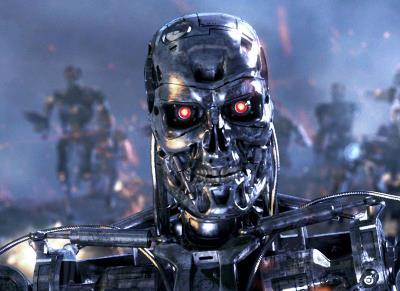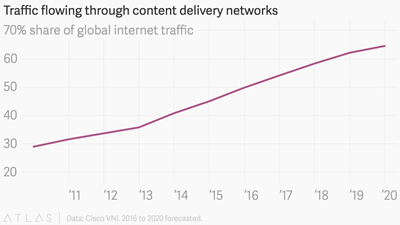Jeremie Averous's Blog, page 79
January 24, 2017
How Artificial Intelligence Challenges Our Regulatory Approach to System Risk
Our current approaches to the regulation of system risk management and prevention of deadly accidents remains very much deterministic. In the most critical applications such as in nuclear power plants or aircraft controls, regulatory authorities require a deterministic demonstration of the links between input and outputs. Superfluous code that is not used needs to be removed, just in case. Older processors are used which reactions are fully known.
 How to test fully HAL’s reactions to all possible events?
How to test fully HAL’s reactions to all possible events?With the advances of Artificial Intelligence, this won’t be possible any more. In particular because the devices become black boxes that have learned to behave in a certain manner most of the time when exposed to certain stimulus. However deterministic proof of the relationship between input and output is impossible and we don’t quite know how it really works inside. It can only be a statistical measure.
This situation is an extensive challenge for the regulatory authorities that will have to regulate safety-critical applications based on AI such as automatic driving. Most current regulatory approaches will become obsolete.
Some regulatory authorities have identified this challenge but most have not, although this will constitute a real revolution in regulation.

January 21, 2017
How Sustainable Change Management is About Developing Autonomy
Change management is about developing autonomy as part of a conscious evolution.
 Change management without autonomy development is an illusion. It corresponds to the old command and control approach. It can only create deviations as soon as control is removed.
Change management without autonomy development is an illusion. It corresponds to the old command and control approach. It can only create deviations as soon as control is removed.
The only sustainable change is created by developing the autonomy of those who have to develop and implement it. Only thus will change be adapted to the situation and only thus can it be really deployed throughout an entire organization.
The development of this autonomy needs to be a conscious decision and process. If the organization is not ready to develop autonomy it can only keep those working approaches of the past.
The image is from the excellent Prosci presentation on ‘Demystifying Change Management’ on Slideshare

January 19, 2017
Why the Terminator Conundrum Requires Active Anti-proliferation Policies
In this excellent article, ‘the Pentagon’s Terminator Conundrum – robots that could kill on their own‘, the issue now faced by weapons developers is explained clearly.
 While the development of drones and robots that could take themselves the decision to engage targets becomes closer, the issue of whether to develop such system becomes a conundrum. It is important to be able to face such a possible threat, at the same time usage of this type of weapon will need to remain very much controlled. Mechanisms similar to control of nuclear proliferation or chemical weapons might need to be put in place – with the particular challenge that no huge and noticeable industrial complex will be needed to produce such weapons.
While the development of drones and robots that could take themselves the decision to engage targets becomes closer, the issue of whether to develop such system becomes a conundrum. It is important to be able to face such a possible threat, at the same time usage of this type of weapon will need to remain very much controlled. Mechanisms similar to control of nuclear proliferation or chemical weapons might need to be put in place – with the particular challenge that no huge and noticeable industrial complex will be needed to produce such weapons.
The Open Letter by concerned scientists on autonomous weapons is interesting to read. It states “If any major military power pushes ahead with AI weapon development, a global arms race is virtually inevitable, and the endpoint of this technological trajectory is obvious: autonomous weapons will become the Kalashnikovs of tomorrow.”
At the same time, military might contend with enhancing human capabilities by teaming humans with robots, in particular to be able to take decisions in uncertain situations. But the issue needs to be tackled quickly because the consequences of robots engaging without control could become a proliferation issue.

January 17, 2017
How Internet Infrastructure Gets Increasingly Privatized
The dominance of video over the internet is privatizing it: to get the video flowing, major operators like Netflix, Google etc have been obliged to invest heavily in infrastructure and this changes fundamentally the topology of internet. The internet has flattened and gotten more and more privatized. This is extensively explained in the Quartz post ‘The internet has been quietly rewired, and video is the reason why‘.
 This does not go without creating an issue: “As Big Tech gobbles up more infrastructure and accounts for more internet traffic, it poses questions for the future of the network’s openness, says Farrell, the former ICANN executive. “It means the internet is evolving from being a peer-to-peer open standards network to being a proprietary set of, effectively, VPNs [virtual private networks],” she says. “Which users are not quite aware of—they think they’re on the open internet and they’re not.””
This does not go without creating an issue: “As Big Tech gobbles up more infrastructure and accounts for more internet traffic, it poses questions for the future of the network’s openness, says Farrell, the former ICANN executive. “It means the internet is evolving from being a peer-to-peer open standards network to being a proprietary set of, effectively, VPNs [virtual private networks],” she says. “Which users are not quite aware of—they think they’re on the open internet and they’re not.””
This evolution will have to be watched in particular when it comes to developing the infrastructure for those that have poor access to internet. The recent backlash against Facebook in India is just an example of things to come.

January 14, 2017
How Leadership is the Ability to Create a Local Alignment in Complexity
There are numerous definitions of leadership. Seen from the complexity view, a leader is someone that is able to create locally, more or less broadly, some alignment inside a complex organization.
 In a complex system it is certainly difficult to create any sort of alignment. Contributors all have their own interest and are very inter-dependently linked and related to other contributors. However when one is able to create a dynamic movement and bring along the necessary contributors, astonishing things can happen. That’s probably what leadership in a complex world means.
In a complex system it is certainly difficult to create any sort of alignment. Contributors all have their own interest and are very inter-dependently linked and related to other contributors. However when one is able to create a dynamic movement and bring along the necessary contributors, astonishing things can happen. That’s probably what leadership in a complex world means.
This may be a new definition of leadership. At the same time I believe it is a useful approach to this issue. Seen from that perspective, a number of leadership practices become clearer and more founded in actual science.
As a leader, impress movement in complexity. It is will be even more powerful than what you believe.

January 12, 2017
How IBM’s next strategic move is in Artificial Intelligence
After reinventing itself as a consulting company in the 1980s (after being a hardware company), IBM is reinventing itself again, this time around Artificial Intelligence, as described in length in this excellent NY Times article ‘IBM is counting on its bet on Watson, and paying big money for it‘. Whether that will effectively replace the struggling consulting activities remains to be seen, but this time this seems to be a major strategic move.
 One of the interesting aspects from the ability to analyse large amounts of data is the possibility to help human decision. In the example quoted in the article, while in 99% of the cases of cancer diagnostics the machine arrived to the same conclusion as the experts (doctors) it also proposed in 30% of the cases alternative treatments, due to the fact it had digested the 160,000 cancer research papers published yearly.
One of the interesting aspects from the ability to analyse large amounts of data is the possibility to help human decision. In the example quoted in the article, while in 99% of the cases of cancer diagnostics the machine arrived to the same conclusion as the experts (doctors) it also proposed in 30% of the cases alternative treatments, due to the fact it had digested the 160,000 cancer research papers published yearly.
This move away from consulting (which was very successful in the 1990s and corresponded certainly to a real need) is also another confirmation that the economic future probably lies in developing AI applications instead of IT systems consulting. Food for thought for many IT consulting companies!

January 10, 2017
Fourth Revolution’s 1000th post!
I can’t quite believe it but according to the site statistics, this is our 1000th post!
 What a journey from humble beginnings on October 11, 2010! And I am so pleased and proud to share with you, at the rythm of 3 posts per week.
What a journey from humble beginnings on October 11, 2010! And I am so pleased and proud to share with you, at the rythm of 3 posts per week.
There have been ups and downs along the way but as I find it useful even personally to sit down from time to time to develop my thoughts on what happens to the world I will certainly countinue for a long time sharing them with you!
I certainly hope we will continue together to explore the Fourth Revolution and what it implies for our daily lives.
Fourth Revolution is not just thoughts and a blog. It is also a company in Singapore with the ambition to actively change things. We are doing that on our scale through our investments and activities. Because in the Fourth Revolution, we also need to experiment and act. And we learn better thus.
Long live the Fourth Revolution.

January 7, 2017
How Complexity and Chaos Extend the Concepts of Quantum Mechanics
Complex and chaotic systems can be described by mathematical equations that are in fact an extension and generalization of Quantum Mechanics equation. That’s what Ilya Prigogine (Nobel-price winner in 1977) explains in his excellent book “the laws of chaos” (apparently not available in English unfortunately).
 We have argued numerous times that one of the precursors of the Fourth Revolution is the emergence of Quantum Mechanics, or at least the limits found to Newtonian Mechanics which founded the Industrial Age. The science of complexity and chaos is even newer. By finding that an extension and generalization of the maths of Quantum Mechanics is needed to describe it, we are indeed confirmed in our observation that it constitutes a further step towards the underlying paradigm of the Collaborative Age.
We have argued numerous times that one of the precursors of the Fourth Revolution is the emergence of Quantum Mechanics, or at least the limits found to Newtonian Mechanics which founded the Industrial Age. The science of complexity and chaos is even newer. By finding that an extension and generalization of the maths of Quantum Mechanics is needed to describe it, we are indeed confirmed in our observation that it constitutes a further step towards the underlying paradigm of the Collaborative Age.
Complexity is still vastly misunderstood because it creates a rupture with the comfortable deterministic view of the world which we entertained during centuries. Its probabilistic nature, the fact that mere observation changes the observed world (like in Quantum Mechanics) makes it even more fascinating.
Welcome to the world beyond Quantum Mechanics and the Uncertainty Principle.

January 5, 2017
How Gut Feeling is Scientifically Proven to Be Effective
As mentioned in this paper ‘Why gut feelings may really help you make risky decisions‘, the effectiveness of gut feelings to take decisions in risky environment seems to be scientifically proven.
 As mentioned in the paper, “Research has indicated that people who are better at detecting their heart rates perform better in laboratory studies of risky decision-making. When people were asked to gamble in laboratory settings, rapid and subtle bodily responses appeared to guide them away from unprofitable trades and toward profitable ones.”
As mentioned in the paper, “Research has indicated that people who are better at detecting their heart rates perform better in laboratory studies of risky decision-making. When people were asked to gamble in laboratory settings, rapid and subtle bodily responses appeared to guide them away from unprofitable trades and toward profitable ones.”
The interesting aspect is that this research has been conducted on market traders, i.e. people that are used to take decisions in a complex environment under tremendous pressure. From the Nature abstract: “traders are better able to perceive their own heartbeats than matched controls from the non-trading population. Moreover, the interoceptive ability of traders predicted their relative profitability, and strikingly, how long they survived in the financial markets.”
To survive, learn to perceive your heartbeat better!

January 3, 2017
What the Benefits of a Deep Conversations Are
Deep conversations are arguably some of the most valuable moments we can spend.
 I love this analysis of conversation from Valeria Maltoni in her post ‘Inventing Options for Mutual Gain‘:
I love this analysis of conversation from Valeria Maltoni in her post ‘Inventing Options for Mutual Gain‘:
“Conversation is not just our ability to verbalize information, it’s also our ability to process information, of becoming aware of what we know, the internal dialogue we have with ourselves and our mind, the interaction between what we think and what we say, but also between what we say and what we do.
Many of the most productive conversations we have lead to an understanding of sorts. In some cases they allow us to connect with one another in a way that leads to solving a problem, advancing a project, and creating opportunity for a next step or action.”
Spot on what a great, deep conversation can achieve.
How often do you have deep conversations? Think again. You might want to have more.




